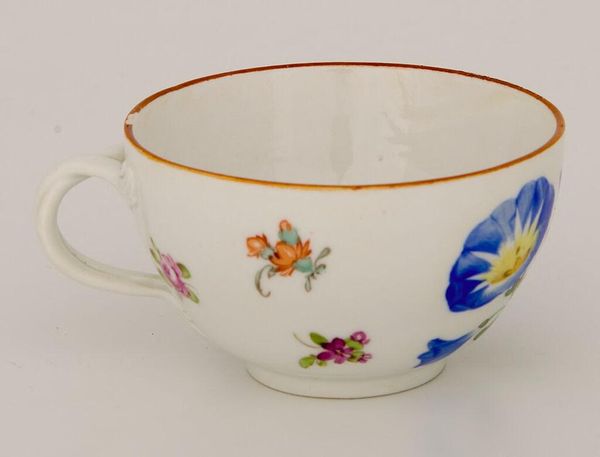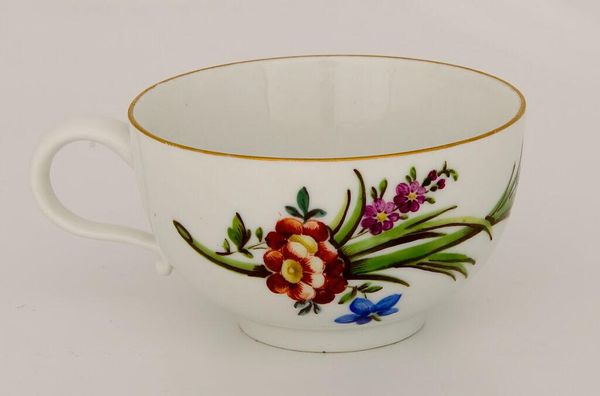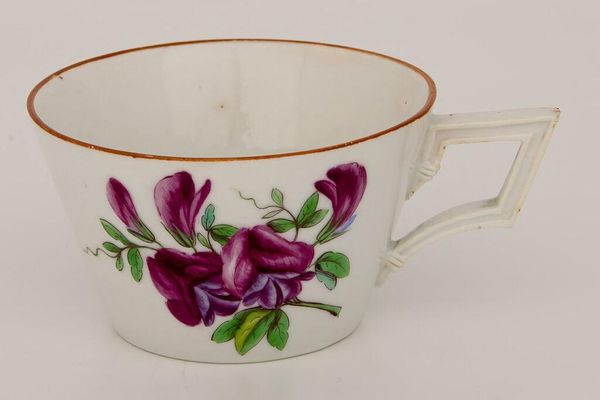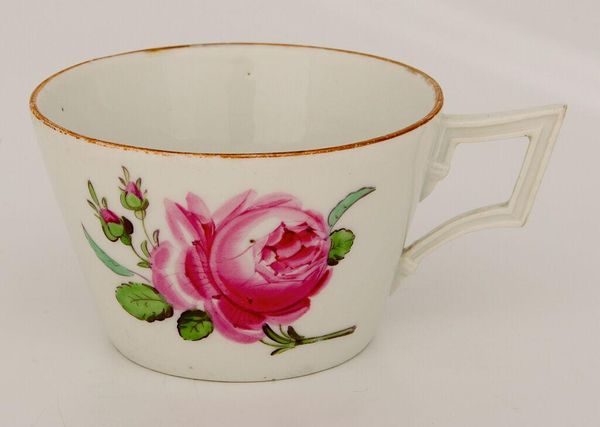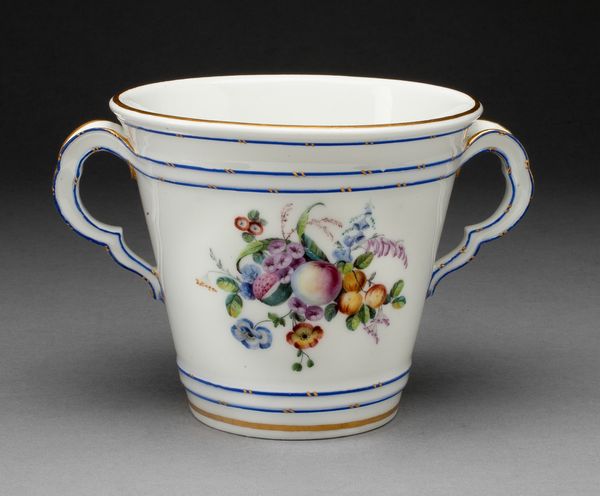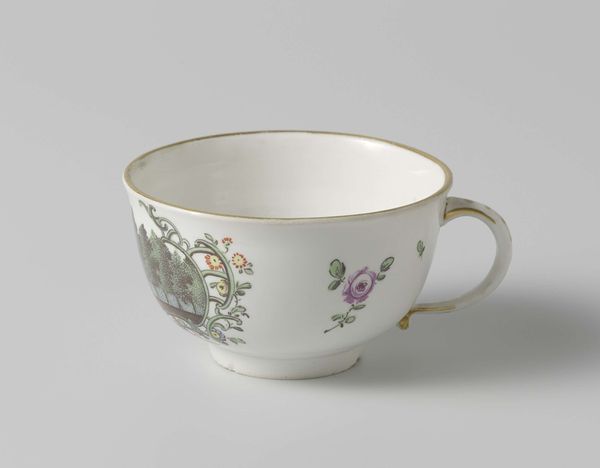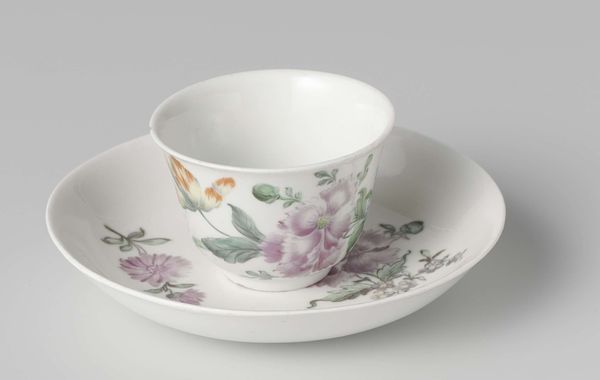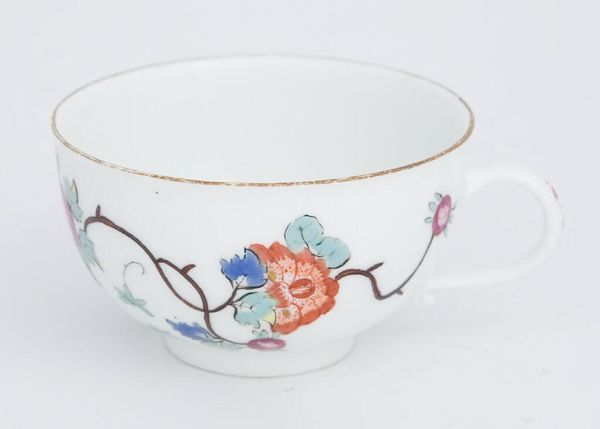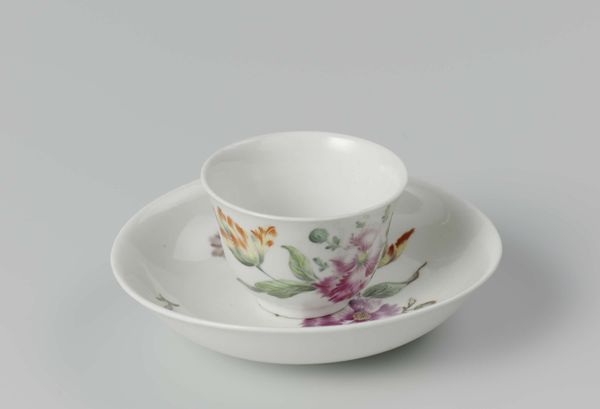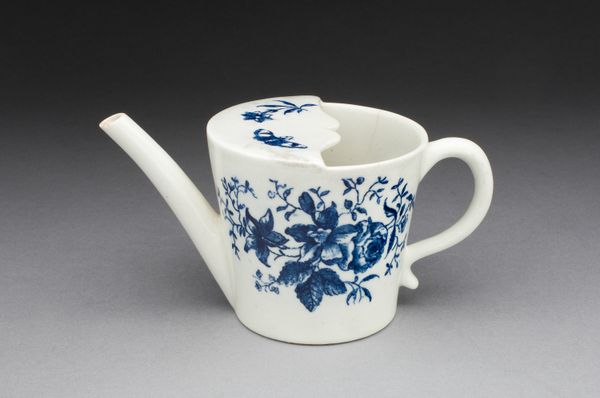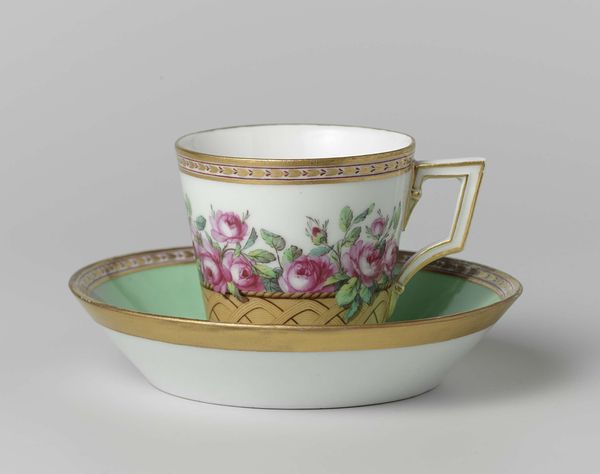
Dimensions: 4.8 Ã 9.8 Ã 7.9 cm (1 7/8 Ã 3 7/8 Ã 3 1/8 in.)
Copyright: CC0 1.0
Curator: The Harvard Art Museums hold this delicate object: a cup manufactured by Meissen Porcelain. It’s adorned with floral motifs. What's your take? Editor: It feels incredibly fragile, doesn't it? The thinness of the porcelain, those hand-painted flowers... almost too precious for everyday use. Curator: Meissen porcelain represented status and wealth, initially reserved for European aristocracy. Its production relied on labor practices tied to the manufactory system. Editor: It is interesting to imagine who owned it, what kind of social rituals it might have been part of. Porcelain was instrumental in shaping social interactions and class distinctions. Curator: Exactly. The cup’s existence also represents the appropriation of Chinese porcelain techniques. It became a powerful symbol of European power and trade. Editor: So much history embedded in this little thing. It transcends its simple function. Curator: Indeed. It invites us to ponder the larger systems of production and social order that created it. Editor: A reminder that even the most delicate objects carry stories of labor, power, and ambition.
Comments
No comments
Be the first to comment and join the conversation on the ultimate creative platform.
